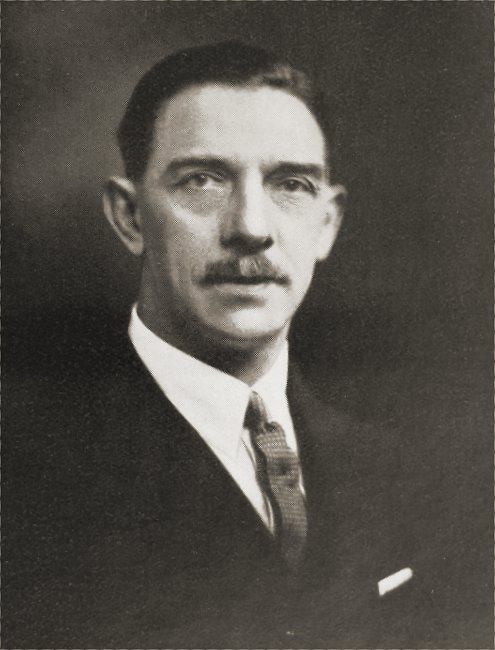|
Captain Jack
Irving, Sunbeam's brilliant design engineer
|
Many of Sunbeam’s excellent products owe their
success to the company’s exceptionally talented
design engineer, Captain J. S. Irving who became
Chief Experimental Engineer in 1918, and Chief
Engineer in 1925. In the 1920s he was in charge of
the development work on the Sunbeam racing cars,
including the 1,000 hp. car that broke the world
land speed record in 1927. |
| John Samuel Irving, known as Jack, was born
in Manchester on 29th March, 1880. He attended
private and board schools from 1885 until 1891,
then attended secondary school from 1891 until
1893. He did a general engineering course at
the Coventry Technical Institute from 1897 until
1903, and in 1909 after completing a City and
Guilds of London Institute course in Motor Car
Engineering, was awarded a 1st Honours and
received a silver medal. He then joined the
Institution of Automobile Engineers.
In 1893 he started a seven year
apprenticeship as a tool maker with the Fulwell
Engineering Company, at Coventry, working under
his father who was General Manager. Between 1900
and 1901 he worked for the Daimler Motor Car
Company Limited at Coventry, before joining
Samuel Robbins of Rugby, an early motor car
dealer, as Depot Manager. |

Jack Irving. |

An advert from 1903.
|
In 1904 he rejoined Daimler at
Coventry where he tested vehicles, before becoming
Chief Instructor. From 1908 until 1910 he lectured
in Motor Car Engineering at Coventry and
Wolverhampton Technical Institutes.
In 1901 he was living at 59
Paynes Lane, Coventry with his parents Samuel
Irving, age 46, born in Manchester, a cycle maker,
and Louisa Ann Irving, age 44, born in Sydney,
Australia. They had seven children; John Samuel
Irving, age 21; Letitia Ellen Irving, age 17, born
in Coventry, a watch finisher; Alice Grace Irving,
age 14, born in Birmingham, also a watch finisher;
Henry Irving, age 12, born in London; Harold Irving,
age 9, born in Ilkeston; Amy Irving, age 7, born in
Coventry; and Louisa Irving, age 7, also born in
Coventry.
J. S. Irving left Daimler in
1911 and joined the Royal Aircraft Establishment, at
Farnborough, where he was in charge of the Engine
Research and Testing Departments. Whilst there he
lived in Reading Road, Farnborough. He
was involved in the development of airships. At the
outbreak of war in 1914 he joined the Royal Flying
Corps where he attained the rank of Captain.
|
|

Jack Irving. |
When the war ended in 1918 he
joined the Sunbeam Motor Car Company Limited, in
Wolverhampton as Chief Experimental Engineer.
He
initially worked on the Maori IV engines for the R33
and the R34 airships, followed by the Cossack III
engines for the R36 and the R38 airships.
He was
also greatly involved in the design of Sunbeam’s
racing cars including the 1923 French Grand Prix
cars, and the extremely successful 2 litre racing
cars. In 1925 he became Sunbeam’s Chief Engineer.
One of his greatest achievements at Sunbeam was the
detailed design of the 1,000 hp. car that broke the
world land speed record at Daytona Beach, Florida on
Tuesday 29th March, 1927. Driven by Henry Segrave,
it achieved a speed of 203.792 mph.
Ironically the record run
was made on J. S. Irving’s 47th birthday.
|
|
In 1927 he became Chairman of
the Wolverhampton Centre Committee of the
Institution of Automobile Engineers. A post he held
for twelve months. He was also an Associate Fellow
of the Royal Aeronautical Society and a Member of
the Society of Automotive Engineers of the U.S.A. In
1927 he became a member of the Institution of
Mechanical Engineers.
Later in 1927, J. S. Irving left Sunbeam to join the
Humphrey-Sandberg Company where he developed the
Humphrey-Sandberg freewheel and easy gear change
device for cars. Whilst there he was given
permission to devote some of his time to the design
and construction of the Irving Napier Special, known
as the ‘Golden Arrow’. The car, built for Henry
Segrave, was powered by a Napier Lion aero engine of
the same type used in Supermarine Schneider Trophy
seaplanes. It was capable of 925 bhp. at 3,300 rpm.
Golden Arrow was built in
Kenelm Lee Guinness’s factory at Putney Vale in West
London. The car was taken to Daytona Beach, Florida,
where it was driven by Henry Segrave, and broke the
world land speed record at 231 mph. on 11th March
1929.
Irving was then appointed
Technical Director of Humber Limited where he
assisted in the design of the Hillman Minx.
In 1931 he joined Bendix
Limited of Kings Road, Tyseley, Birmingham as
general manager. In 1936 to 37 he was President of
the Institution of Automobile Engineers. After Bendix
Amalgamated with Girling Limited in 1943, he became
Technical Director, a post he held until his
retirement in 1946.
J. S. Irving was a modest and
kind man, who was always willing to offer a helping
hand. In his workshop at home he used to make toys
which were taken on Christmas Eve to the local
children's homes. He died at Acocks Green,
Birmingham on 28th March, 1953. A large number of
people attended the funeral service, many from the
automobile industry. He married in 1904, and was
survived by his son and daughter.
|
 |
Return to
the
previous page |
|